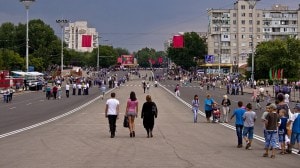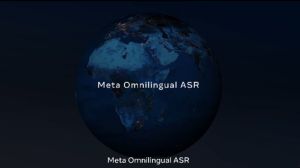The undiscovered country of the immigrant
Walter Lippman had once said “The great social adventure of America is no longer the conquest of the wilderness but the absorption of f...

Walter Lippman had once said “The great social adventure of America is no longer the conquest of the wilderness but the absorption of fifty different peoples”.
Without comprehension, the immigrant would forever remain shut — a stranger in America, writes Anzia Yezierska, the Polish-American author. “Until America can release the heart as well as train the hand of the immigrant, he would forever remain driven back upon himself, corroded by the very richness of the unused gifts within his soul.’’
International migration will be one of the most complex challenges as globalisation gathers momentum. These challenges need to be resolved with sensitivity and imagination for the world to benefit from the positive features that international migration can offer.
While the accuracy of figures and quality of documentation doubtful, the Global Commission on International Migration (GCIM) has estimated that in 2002, the total number of international migrants was 175 million which is about 3 per cent of the world population. This figure was 75 million in 1965 and it is projected to reach on the basis of past trends to 250 million by 2050. The decade of the 1990s saw an increase of 21 million (14 per cent) in the number of international migrants; 23 million in the more developed regions and 2 million in the developing countries. There are about 15 million refugees including those seeking asylum. Estimates also suggest that 60 per cent of the world’s migrants currently reside in the more developing countries while 40 per cent do so in the less developing countries.
This implies that almost 10 per cent of the total people living in the developed countries are migrants as compared to 7 per cent in developing countries. An average of at least 2.5 million migrants every year moved from the less developed to the more developing countries. Europe has the highest number of migrants placed around 56 million followed by Asia with 50 million, North America with 41 million and Africa at 16 million. Furthermore, migrants represented 3 per cent of the overall population growth of the developing countries between 1990-2000 while they represented 56 per cent of the overall population in the more developed countries. (These figures are taken from the UN Population Division as quoted in the International Migration Report (2002).
Demographic Profile
The challenges associated with these flows will only increase given the demographic profile of the more mature societies. The aging of the population will increase demand for younger workers, both the power the economy as well as provide, more specifically, services for the increasing elderly population. These factors may strengthen the economic basis for migration, augmenting overall flows.
While demographic models and methodology in determining rates of economic growth have followed variable approaches, there is no doubt that over the next 50 years, share of world population aged above 65 will double and estimates suggest that global average age rises from 26.5 to 36.2, retirees will make up nearly one quarter of developed countries’ populations, with the fast growing 80 plus age group’s share quadrupling globally and rising from 3 per cent to 8 per cent in the more mature societies. ( UN Population Division : World Population Prospects : The 1998 Revision (The Demography of Aging in Japan and the US by David Bloom, A.K. Nandakumar and Manjiri Bhawalkar)
When looking at the share of population in the age group of 65 and below as well as the average age between the developed and developing and the least developed countries, the following conclusions emerge. While life expectancy has risen in the last 50 years, the number of people aged 80 or over in the world have risen to 550 million, an increase of nearly 350 million; in the next 50 years, it will see a 1.5 billion increase.
In fact, according to Paul Wallace, “when the agequake strikes in earnest, the improvement in living standards we take for granted will slow to a trickle”. Major changes in society leading to new sources of economic dynamism would be needed. Apart from this, the implications of shifting demographic profile in terms of savings rate, consumption pattern, investment portfolio will need fundamental re-assessment.
The consequences of demographic transition in emerging parts of the world particularly the populous countries of Asia based on long-term growth trends, productivity changes have not received adequate attention.
Divergent Approaches
The current approach on migration is riddled with contradictions which are baffling and not suggestive of any definitive answers. International governance on migration issues is highly fragmented. The total number of asylum seekers are estimated at one million even though the bulk of the applicants seeking better improved economic opportunity and quality of life do so in the garb of asylum seekers. The difficulty in processing and differentiation between the genuine and the ‘pseudo-asylum seekers’ is a complex exercise resulting in incalculable human hardship to individuals who are genuinely in need of protection from policies of persecution faced in their country of residence or have forced to seek asylum for reasons which have received international acceptance. Mechanisms, procedures, and training of relevant personnel to clearly differentiate among these categories require to be evolved and consensus reached among destination country policies which are both humane and symmetric.
The issue of human rights and human security have multiplier and contradictory dimensions. There is a litany of international conventions and charters protecting human rights of migrants and in particular vulnerable groups such as women and children. Many of these have either not been ratified or treaty in their implementation.
Similarly, there is a litany of international institutions with somewhat overlapping if not contradictory approaches in the implementation of many of these diverse obligations on human rights, asylum seekers and refugees.
There is need for greater symmetry and cohesiveness in the obligations undertaken. The enforcement mechanism including effective border management also need review which will enable mitigation of hardship to genuine migrants even while dealing severely with those connected with human smuggling, trafficking particularly many women and children. While dealing with border management issues, harmonisation of border management policies, use of modern technology on advanced surveillance system and effective inter and intra-regional co-operation need priority attention. The mitigation of human hardship to genuine migrants require a humane approach but the unprecedented growth and spread of international terrorism has greatly complicated earlier liberal approaches which were better destined to achieve this objective.
The author is Member, Global Commission on International Migration. Member, Planning Commission, Government of India. This article is based on his contribution in the meeting of the Global Commission on International Migration.





- 01
- 02
- 03
- 04
- 05


























